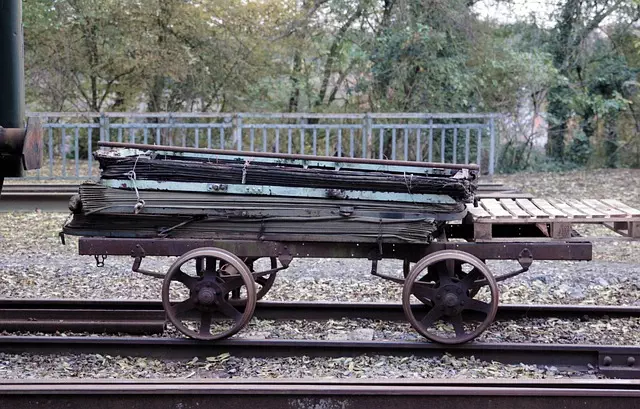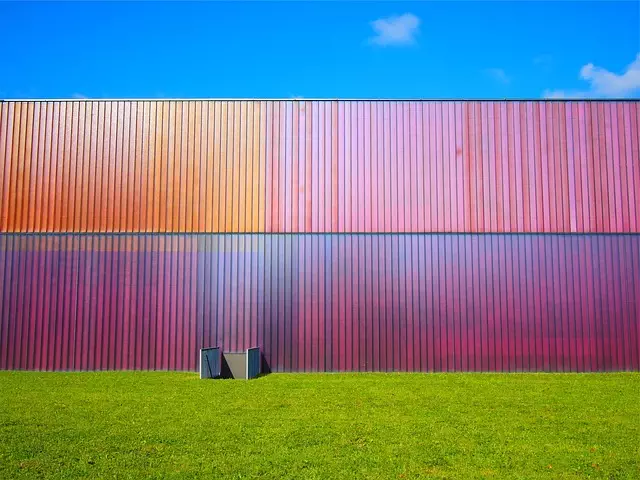Modern Siding Installation: Trends, Benefits, and Step-by-Step Guide for Appleton Homes
Appleton, Wisconsin residents can enhance their homes with contemporary siding designs, such as viny…….
In the heart of Wisconsin, Appleton stands as a testament to the region’s commitment to quality living and sustainable development. A key aspect of this commitment is the installation of siding, which not only enhances the aesthetic appeal of homes but also provides durability and protection against the elements. This article delves into the nuances of “Siding Installation Appleton Wisconsin,” its impact on local architecture, its contribution to economic growth, and the technological advancements that drive this industry. Readers will gain a comprehensive understanding of how siding installation has evolved over time and what it means for the future of Appleton’s residential and commercial structures.
Siding refers to the exterior cladding attached to the exterior walls of buildings to protect against weather, wind, sun, and other elements while also playing a significant role in the visual appeal of a property. In Appleton, Wisconsin, siding installation is not just about covering walls; it’s an art and a science that requires precision, expertise, and a keen understanding of local climatic conditions. The core components of siding installation include the selection of materials such as vinyl, wood, fiber cement, and metal siding, as well as proper insulation and fastening techniques to ensure longevity and performance.
The historical context of siding installation in Appleton reflects its evolution from traditional wood clapboards to modern composite materials. Over the years, the demand for durable, low-maintenance, and cost-effective siding solutions has driven innovation and a broader range of options for homeowners and businesses.
The influence of siding installation extends beyond Appleton’s borders, as global trends in construction and sustainable building practices shape its trajectory. The demand for energy-efficient homes has led to the development of siding products with enhanced insulation properties. Moreover, the rise of smart home technology has integrated intelligent siding solutions that can adapt to environmental conditions, furthering the global impact of this industry.
Different regions face unique challenges related to climate and weather patterns, which in turn influence the types of siding materials and installation methods favored. For instance, areas prone to high humidity may prefer materials resistant to mold and decay, while regions with extreme temperatures require siding that can withstand wide fluctuations in temperature.
The economic aspects of siding installation are multifaceted. From a local perspective, it contributes to the construction industry’s employment rates and stimulates the economy by encouraging home improvements and new housing developments. On a larger scale, the demand for siding is indicative of a robust housing market and reflects consumer confidence in economic stability.
Investment patterns in Appleton reveal that well-maintained properties with updated siding retain their value better and can even appreciate over time. This not only benefits individual homeowners but also contributes to the overall property values within the community, making siding installation a strategic investment.
Technological advancements have revolutionized the siding installation process in Appleton, Wisconsin. Innovations such as computer-aided design (CAD) and manufacturing techniques like automated nail-guns have streamlined the installation process, reducing time and labor costs while improving accuracy and precision.
Advancements in material science have led to the development of siding products that are not only aesthetically pleasing but also highly durable and sustainable. For example, engineered wood siding offers the natural beauty of wood without the maintenance challenges, while metal siding provides exceptional longevity and resistance to environmental factors.
The future potential for technological advancements includes smart siding that can self-repair minor damages, adapt to thermal changes, and even generate electricity through solar panel integration.
Local, state, and federal policies and regulations govern the siding installation industry in Appleton, Wisconsin. These include building codes, zoning laws, and environmental regulations that ensure the safety, durability, and sustainability of siding installations.
The International Building Code (IBC) provides minimum requirements to protect the health, safety, and welfare of the occupants and the public at large. Additionally, local ordinances may dictate the types of materials and colors allowed in specific neighborhoods or historic districts, preserving the architectural integrity of Appleton’s diverse housing stock.
One of the primary challenges faced by the siding installation industry is adapting to the varying needs of different regions while maintaining cost-effectiveness. Another challenge is the increasing demand for sustainable and environmentally friendly siding options, which requires significant investment in research and development.
Criticisms often center around the use of non-recyclable materials and the environmental impact of siding manufacturing and disposal. To address these issues, industry players are exploring innovative solutions such as recycling programs and the use of bio-based materials.
Several case studies from Appleton, Wisconsin, illustrate the successful application of siding installation in various settings. For instance, a local historic home was restored with period-appropriate siding, maintaining its character while ensuring structural integrity for generations to come. Another case study involves a modern residential development that utilized high-efficiency siding materials to reduce energy costs for homeowners.
These real-world applications demonstrate the practical benefits of siding installation in both preserving heritage and embracing innovation for contemporary living.
Siding installation is a critical component of the construction industry in Appleton, Wisconsin, with far-reaching economic, environmental, and aesthetic implications. The integration of advanced technologies, adherence to strict regulations, and responsiveness to global trends ensure that siding continues to be a dynamic field that supports sustainable development and enhances property values.
As the industry evolves, it will undoubtedly face new challenges and opportunities, but its foundation in protecting homes while adding visual appeal is unchanging. The future of siding installation in Appleton promises to be as innovative and essential as ever, with a focus on sustainability, efficiency, and design that meets the needs of homeowners and the community at large.

Appleton, Wisconsin residents can enhance their homes with contemporary siding designs, such as viny…….

Homeowners in Appleton, Wisconsin, are discovering the benefits of vinyl siding installation as a co…….

Wood and vinyl siding are popular choices for exterior cladding in Appleton, Wisconsin, offering aes…….

Appleton, Wisconsin homeowners are increasingly choosing sustainable siding options for their eco-fr…….

In storm-prone Appleton, Wisconsin, investing in storm-resistant vinyl siding is crucial for home pr…….

Seamless vinyl siding is a popular choice in Appleton, Wisconsin for exterior cladding due to its mo…….

The siding industry in Appleton, Wisconsin, has evolved significantly, shifting towards modern mater…….

Homeowners in Appleton, Wisconsin, increasingly opt for wood, particularly vinyl siding, for its dur…….

Brick veneer siding, popular in Appleton, Wisconsin, offers an affordable, aesthetically pleasing al…….